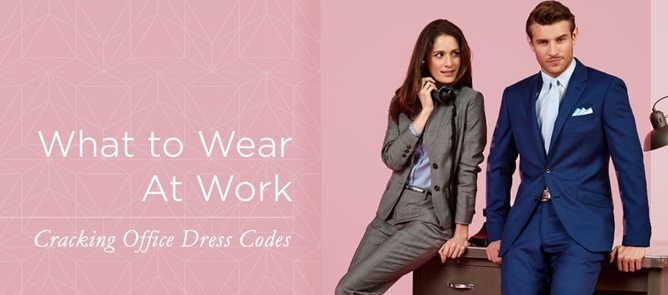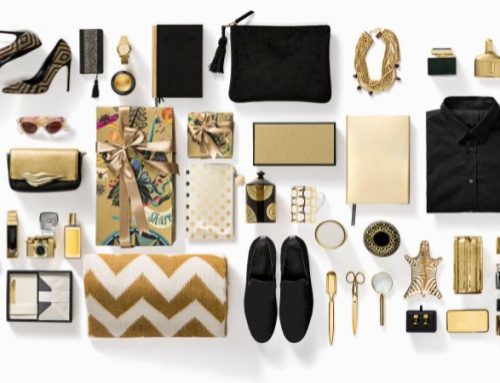Creating a professional image at work
When ‘What to Wear at Work’ was sent to us from Jermyn Street shirt-maker T.M. Lewin, it got us thinking about a topic that is close to our hearts- creating the right professional image at work.
Our professional image is formed from others’ perceptions of not only our ability to perform the job we are paid to do, but our personality and presentation, even stereotypes. And with research linking image to career success on many levels, we ask, just how do you create the right image at work?
Creating a professional image is more complicated than you might imagine.
The creation of a viable professional image is actually rather more complex than we might imagine. When we consider our professional image and how others view us, we assess the differences between how we wish to be seen (confident, reliable, hard-working) against how we believe we are seen (lacking in confidence, unreliable and lazy). And if there appears to be a gap, there are strategies you can employ to create, alter and maintain your image.
Impression management: There are two ways of managing others’ impressions of you (and therefore your image). The first is the traditional option, reinforcing those personal characteristics you wish to convey (that you are hard-working and so forth), the second involves social identity based impression strategies which in essence could be seen as managing cultural stereotypes.
We all have a social identity that relates to things such as our age, social status, race, religion, even life stage and with this comes stereotypes attached to the identities by ourselves and others. Consider for example, a youngster joining an older team and the image colleagues may create for this younger worker. And of course, social identity can change over time such as with a worker becoming a parent.
The impact of social identity upon image can be so strong that individuals seek to engage in social identity based impression management (SIM), perhaps by distancing themselves from a social identity not valued within the team or by attempting to attach greater positivity to this particular social identity.
Non-verbal cues: This is all about how you present yourself non-verbally, the types of clothes you wear, body language, even the fragrance you choose. T.M.Lewin rightly point out that the evolving working environments, from traditional business formal to creative settings and everything in-between, present an ever present challenge of getting it sartorially right. And getting it right has never been more important.
Studies found that those who didn’t project the right professional image through clothing were perceived by others to be not only less competent but less of a cultural fit. Interestingly, T.M. Lewin suggest that even business formal can include ‘subtle pops of personality’ and this ties in with research that personal uniqueness can actually transcend stereotyping, meaning that your clothes can assist with social identity based impression management.
Similarly, particular ways of dressing can reinforce personal characteristics- like a tailored suit encouraging perceptions of authority and competence. Don’t forget the little details either; research suggests that fragrance is linked to formation of social identity impressions.
Verbal cues: A huge part of your image and the formation of your image concerns what you actually say and do including the type of information that you give others about yourself, your hobbies for example. A youngster joining a team who wishes to distance themselves from the negative stereotypes held by older colleagues may talk of weekend plans that disconfirm the colleagues’ perceptions of this age group, thus engaging in SIM.
Another aspect concerns how you treat others as this can greatly widen the gap between desired and perceived image. Perhaps you wish to be seen as a fair and understanding boss, but are overheard being entirely unsympathetic to an approach from a team member. For an image to have longevity, desired personal characteristics need to be consistent across what you say and what you do.
The first step to changing your image is being aware of what others’ perceptions actually are, consideration of the personal characteristics you wish to convey not only for the job that you have but the job that you want, alongside an honest assessment of your social identity.
It is at this point that you can begin to manage your image, looking at the verbal and non-verbal cues you are giving others and how you can subtly amend and alter your image to greater align your desired and perceived image. With attention to detail and commitment to maintenance, an appropriate and viable professional image is absolutely achievable.
Click here to view “What to Wear at Work” by T.M. Lewin
————————————————————————————————————————————–
About the author
Paul Russell is co-founder and director of Luxury Academy London, www.luxuryacademy.co.uk, a multi-national private training company with offices in London, Delhi and Visakhapatnam. Luxury Academy London specialise in leadership, communication and business etiquette training for companies and private clients across a wide range of sectors. Prior to founding Luxury Academy London, Paul worked in senior leadership roles across Europe, United States, Middle East and Asia. A dynamic trainer and seminar leader, Paul has designed and taught courses, workshops and seminars worldwide on a wide variety of soft skills.




